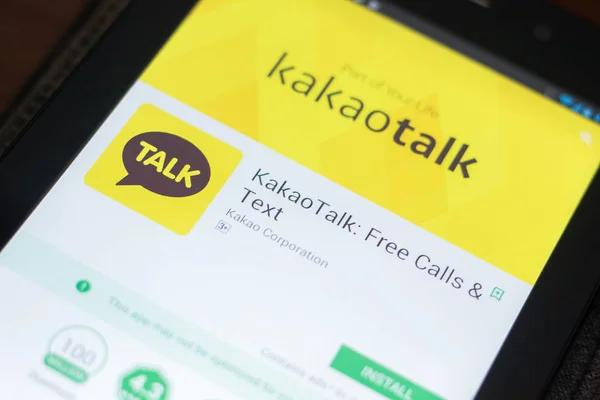Unveiling the Secrets of Domestic KakaoTalk Verification
KakaoTalk, a popular South Korean messaging app, is known for its user-friendly interface and unique features. However, its domestic verification process has been shrouded in mystery for many users. This article aims to unveil the secrets behind KakaoTalk’s domestic verification system.
The first thing to note about KakaoTalk’s domestic verification process is that it primarily serves as a security measure. It ensures that only legitimate users can access the platform and helps prevent fraudulent activities such as spam or hacking attempts. The process involves confirming whether the user resides in South Korea by checking their mobile phone number against a database of registered South Korean numbers.
To initiate the verification process, users need to provide their mobile phone number after installing the app on their device. Once entered, KakaoTalk sends an SMS with a unique code to this number. Users must enter this code into the app within a specified time limit to verify their account successfully.
However, there are certain intricacies involved in this seemingly simple procedure that often confound users—especially those who reside outside South Korea or use foreign phone numbers. For instance, some have reported difficulties receiving the SMS containing the verification code due to network issues or discrepancies between local 국내카톡인증 and international dialing codes.
Moreover, even if they receive the message successfully but fail to input it within the given timeframe (usually around 2 minutes), they may have trouble reinitiating the process because of restrictions imposed by KakaoTalk’s system aimed at preventing abuse of service.
Another point worth noting is that once verified domestically through a South Korean number, you cannot change your registered phone number without going through another round of stringent verification procedures; this includes providing identification documents like passport copies or driver’s licenses which might not be feasible for everyone.
Despite these challenges inherent in KakaoTalk’s domestic verification system, it should be remembered that they exist primarily as protective measures designed with user safety in mind. The company continuously works towards making this process more user-friendly and efficient, taking into account feedback from its vast global user base.
In conclusion, while the domestic verification process of KakaoTalk may seem complex and secretive, it is a necessary security protocol to protect the platform and its users. Understanding how it works can help users navigate through it more efficiently and enjoy a seamless messaging experience on one of Asia’s most popular communication platforms.

